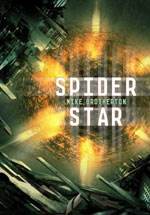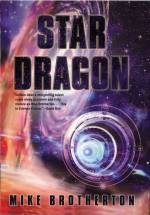Search
Interview with the Bad Astronomer, Phil Plait, about Death from the Skies
November 3rd, 2008
I am pleased to offer an interview with Phil Plait, the Bad Astronomer, on the release of his latest book, Death from the Skies.
1) What was your inspiration for writing this book?
I have always been fascinated by the biggest and bangiest of things in the Universe: exploding stars. They have everything: titanic explosions, incredible densities, vast energies, and as a fun bonus they leave behind screaming neutron stars or voracious black holes. For my PhD I studied a star that exploded back in 1987, and went on to work on other violent events, too.
When it came time to write a second book, the topic seemed pretty natural. Plus, there’s a renewed interest in asteroid impacts; I can’t go a week without seeing some documentary on TV lovingly showing just how devastating a big impact would be. But they always get it wrong! They make them too violent, or not violent enough. They don’t talk about the actual risk, the really low likliehood that you’ll get creamed by an impact.
So I sat down and brainstormed every single astronomical event I could think of that could wipe out life on Earth. I have to admit, it was fun.
2) What attracts you to astronomy and death?
I’ve always been in love with astronomy, since I was five and saw Saturn through a telescope. That hooked me instantly! And being a little boy, I would make starship models out of Legos and blow them up with firecrackers. So merging the two seems natural enough.
And honestly, who doesn’t love a good disaster movie! That’s what this book is, a disaster movie in 9 movements, with the Earth getting whacked in each one.
3) What sort of research did you do to write this book?
I have a decent general knowledge of astronomy, with some expertise in some fields. But I don’t know much about the actual series of unfolding events after an impact, or what happens if the Sun belches out a monumental solar flare in our direction. So I read a lot of general articles, quite a few journal (professional) papers, made a lot of phone calls, and sent out a ton of emails. Happily, I have friends who are experts in these other fields (including one who studies what happens when a nearby supernova tears away our ozone layer, for example). I had a lot of ground covered with these folks.
I did a lot of math, making sure I understood the scale of some of these things. I have a few notepads filled with calculations about black hole masses, particle radiation propagation effects, and how hot and bright the Sun gets as it swells into a red giant. That last one creeped me out. The death of the Sun really got to me; it’s inevitable, even though we have a few billion years to fret over it.
The hard part was calculating statistics. For some I had experts to rely on; the lifetime odds of dying in an asteroid impact turn out to be about 1 in 700,000, roughly the same as being killed by a terrorist or on an amusement park ride. But what about being swallowed up by a black hole? Out came the notepad again. But I think I was able to nail some down to within a factor of ten or so (a table of the risks was published online by Discover Magazine here: http://blogs.discovermagazine.com/badastronomy/2008/10/28/hive-overmind-of-death/). Good enough for astronomy!
4) Does this book have a theme or message you’re trying to impart?
A few, actually. One is that the Universe is incredibly inhospitable, yet we have this planet that’s doing OK by us. Another is that the Universe is incredibly cool and interesting. Black holes are really fun to think about. Actually, most of this is mind-stretching and fun. What happens to the Sun after 100 quadrillion years? One hundred octillion? A googol?
But a strong point I make is how unlikely most of this stuff is. Some are inevitable (the Sun expanding, the Milky Way colliding with the Andromeda galaxy, the eventual decay of matter) but won’t happen for a long, long time. Others could happen tomorrow (asteroid impact, giant solar flare), but are really long odds. And in some cases, we can minimize or prevent their happening, like moving asteroids out of the way before they hit us.
5) Who are your favorite authors and books now and when you were growing up?
When I was a kid just about all I read was hard SF or related to it. Asimov was a biggie. Clarke (I have an autographed The Coming of the Space Age!), Heinlein, Niven, all the biggies. I stopped reading SF for a few years, but now I’m back! John Scalzi, Joe Haldeman (I’m rereading The Forever War right now), and (sycophantically) a book by Brotherton is sitting on my desk, too.
As far as science non-fiction, I love Sagan of course. Neil Tyson is another; I have a lot of astronomy friends who have written great books. I have a lot of skeptical books, too: Shermer, Randi, Wiseman, Kurtz, Harris, Dawkins.
6) What projects are you working on now?
Mostly two big ones: my Bad Astronomy Blog (http://blogs.discovermagazine.com/badastronomy), which keeps me hopping a good chunk of the day, looking for new things to gripe^h^h^h^h talk about, and being president of the James Randi Educational Foundation (http://www.randi.org). Randi is an icon in the critical thinking movement, and I’m pleased and — pardon the expression — in disbelief that I am playing this part Randi is the big reason I got into skepticism, and to work with him now is a dream come true. I can’t know for sure — who can? — but I think that we can make a big impact on the world by promoting rational thought in every field of human endeavors. Politics, history, science, technology, business… everything is touched by irrationality, and if we can get enough people to just *think*, well, I imagine this would be a much finer place to hang out.
At least until the inevitable destruction of the planet. But that gives us plenty of time to figure things out.
You can follow any responses to this entry through the RSS 2.0 feed. You can leave a response, or trackback from your own site.


For someone who said they’d read Asimov growing up, you’d have thought that Plait would have at least MENTIONED Asimov’s “A Choice of Catastrophes”, which covers much of the same ground as his latest book (and is still in print).
[…] Fellow astronomer and blogger Mike Brotherton […]